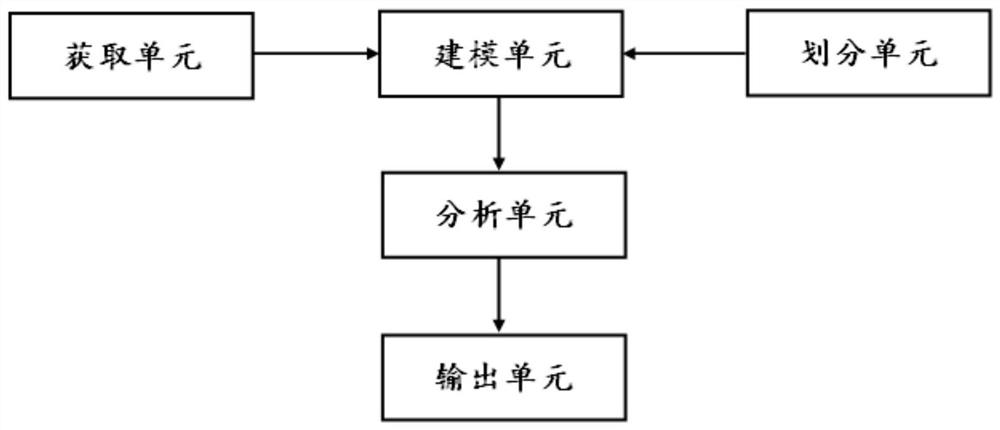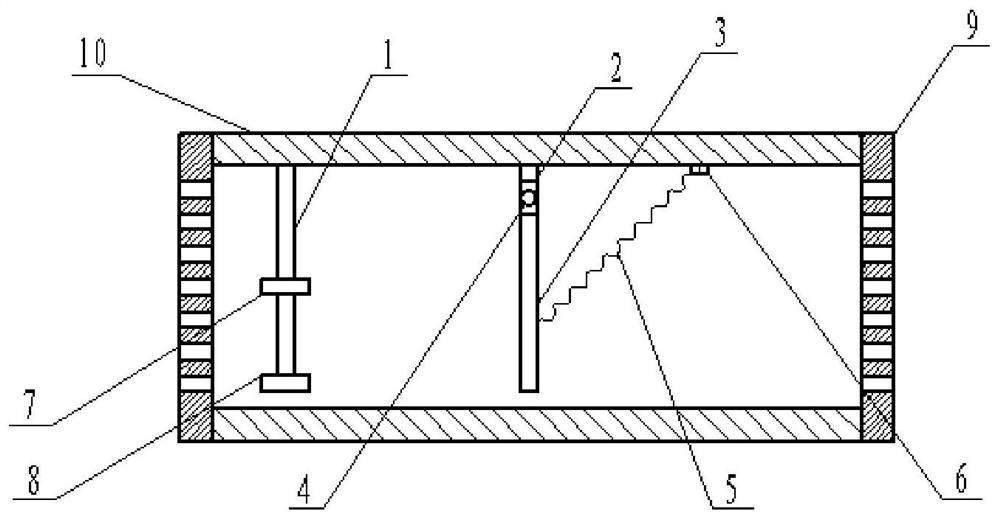Water environment pollution analysis system and method based on big data
An analysis system and analysis method technology, applied in the field of water resources monitoring, can solve the problem of inability to carry out pollution source investigation and traceability work in a timely and effective manner, and achieve the effect of narrowing the scope of supervision and investigation and improving supervision capabilities.
- Summary
- Abstract
- Description
- Claims
- Application Information
AI Technical Summary
Problems solved by technology
Method used
Image
Examples
Embodiment 1
[0042] The embodiment of the water environment pollution analysis system based on big data of the present invention is basically as attached figure 1 shown, including:
[0043] Acquisition unit, used to obtain basic river data and pollution source data;
[0044]The division unit is used to divide the river section according to the geographical information data of the river and the setting of the water environment quality monitoring section, divide the river into several control units with the monitoring section as the boundary, and the boundary of each control unit is the monitoring section;
[0045] The modeling unit is used to establish the pollutant traceability relationship of "monitoring section-pollution source" based on the river basic data, pollution source data and river section division, and establish the river pollution source and monitoring section water quality response relationship with the EFDC hydrodynamic model;
[0046] The analysis unit is used to analyze t...
Embodiment 2
[0064] The only difference from Example 1 is that
[0065] In S4, the discharge of pollutant sources in the river is also predicted based on the basic data of the river and the data of pollution sources, and the pollutants are allocated according to the concentrated location of the pollution sources and the river control unit. For example, construct a numerical model for the conservation of pollutant mass, solve its numerical solution through the water quality balance equation by using the finite difference method, and calculate the dynamic change of the discharge of pollutants on the monitoring sections of each river section with time; at the same time, when solving the numerical solution When , if the pollution sources are relatively concentrated and the river control unit is relatively large, then assign or set a higher initial pollutant concentration.
[0066] In addition, according to the discharge data of historical pollution sources of each monitoring section, the risk ...
Embodiment 3
[0069] The only difference from Embodiment 2 is that it also includes a collection device, such as the attached figure 2 As shown, the collection device includes: a first pole 1, a second pole 2, a rotating rod 3, a pin 4, a spring 5, a tension sensor 6, a controller 7, a water quality detector 8, a filter plate 9, and a housing 10 . The housing 10 is cylindrical, and the left and right ends of the housing 10 are equipped with filter plates 9, for example, by screws; the filter plates 9 are drilled with a plurality of filter holes. One end of the first strut 1 is welded on the inner wall of the housing 10, and the controller 7 and the water quality detector 8 are fixedly installed on the other end of the first strut 1, for example, by screws or by steel wires. One end of the second pole 2 is welded on the inner wall of the housing 10 , and the other end is hinged with the rotating rod 3 , that is, hinged through the pin 4 , and the rotating rod 3 can rotate freely around the...
PUM
 Login to View More
Login to View More Abstract
Description
Claims
Application Information
 Login to View More
Login to View More - R&D
- Intellectual Property
- Life Sciences
- Materials
- Tech Scout
- Unparalleled Data Quality
- Higher Quality Content
- 60% Fewer Hallucinations
Browse by: Latest US Patents, China's latest patents, Technical Efficacy Thesaurus, Application Domain, Technology Topic, Popular Technical Reports.
© 2025 PatSnap. All rights reserved.Legal|Privacy policy|Modern Slavery Act Transparency Statement|Sitemap|About US| Contact US: help@patsnap.com


